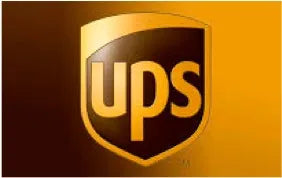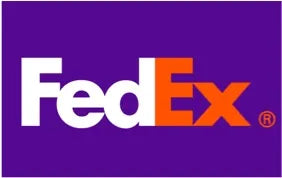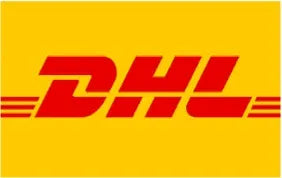Importing toys from China can be a great way for businesses to increase their product offerings and tap into the lucrative global toy market. China is a major factory of toys, with a wide range of options available at competitive prices. However, importing toys from China also comes with its own set of challenges and considerations. In this blog post, we will explore the complete process of importing toys from China, including the steps involved, the regulations and standards to be aware of, and the potential challenges and pitfalls to avoid.
1、Researching and Evaluating Potential Toy factories in China:
The first step in the process of importing toys from China is to research and evaluate potential factories. This is an important step as it can help you to find reliable and trustworthy factories who can produce high-quality toys that meet your requirements and expectations. Here are a few tips for researching and evaluating potential toy factories in China:
· Look for factories with a proven track record of producing high-quality toys. This may include certifications, such as ISO or ICTI, as well as positive reviews and customer feedback.
· Consider the production capacity of the factory. Can they meet your quantity requirements? Do they have the necessary equipment and expertise to produce the toys you are interested in?
· Consider the reputation of the factory. Are they known for ethical practices and fair treatment of their workers?
· Research the factory's product range. Do they offer a wide range of toys or specialize in a particular type of toy?
· Consider the factory's location. Is the factory located near the port where you plan to import the toys? This can help to reduce transportation costs and delivery times.
· Check for any potential red flags, such as unpaid fines or legal disputes.
There are several ways to research and evaluate potential toy factories in China, including:
Trade shows: Trade shows, such as the China Toy Expo and the China International Toy Fair, are a great way to meet and evaluate potential toy factories in person.
Online directories and platforms: Online directories, such as Alibaba, Marcothepolo, and Made-in-China, and platforms, such as Global Sources and Toy Association, can be useful for finding and evaluating potential toy factories in China.
Personal connections: Personal connections, such as friends or colleagues who have imported toys from China, can be a valuable source of information and recommendations.
Once you have identified a list of potential toy factories in China, it is essential to thoroughly evaluate them before making any decisions. This may include requesting samples, visiting the factory's factory, and negotiating terms and conditions.
2、Understanding and Complying with Toy Regulations and Standards
Importing toys from China requires an understanding of and compliance with various regulations and standards. These regulations and standards are in place to ensure the safety and quality of toys, and failure to comply with them can result in fines, legal disputes, and damage to your reputation. Here are some key regulations and standards to be aware of when importing toys from China:
ASTM F963: This is the main standard for toy safety in the United States, and it covers a wide range of toy safety requirements, including physical and mechanical properties, flammability, and chemical hazards.
EN 71: This is the main standard for toy safety in the European Union and covers similar requirements as ASTM F963.
CPSC: The Consumer Product Safety Commission (CPSC) is the main regulatory body for toy safety in the United States, and it is responsible for enforcing ASTM F963 and other toy safety regulations.
REACH: The Registration, Evaluation, Authorization, and Restriction of Chemicals (REACH) is a European Union regulation that controls the use and handling of chemical substances in toys.
It is important to ensure that the toys you import from China comply with the relevant regulations and standards in your target market. This may involve testing the toys at a third-party laboratory and obtaining necessary certificates and documents. It is also important to keep up-to-date with any changes or updates to the regulations and standards, as non-compliance can have serious consequences for your business.
3、Navigating the Logistics of Importing Toys from China
Importing toys from China involves navigating a range of logistics, including transportation, customs, and taxes. Here are some key considerations for the logistics of importing toys from China:
Transportation: There are several options for transportation when importing toys from China, including air freight, sea freight, and rail freight. Each option has its own pros and cons, including cost, speed, and reliability. It is important to carefully evaluate the different options and choose the one that best meets your needs and budget.
Customs: Importing toys from China requires clearing customs in the destination country. This involves completing necessary paperwork, paying customs duties and taxes, and complying with any other requirements. It is important to be familiar with the customs procedures in the destination country and to work with a reliable customs broker to ensure smooth customs clearance.
Taxes: Importing toys from China may also be subject to various taxes, such as value-added tax (VAT) and goods and services tax (GST). It is important to be familiar with the tax rules and regulations in the destination country and to ensure that you pay the necessary taxes.
Properly managing the logistics of importing toys from China is crucial for the success of your business. It is important to carefully plan and coordinate the different aspects of the logistics process to ensure timely and cost-effective delivery of the toys.
4、Overcoming Common Challenges and Pitfalls
Importing toys from China can come with its own set of challenges and pitfalls, including language barriers, cultural differences, and intellectual property (IP) issues. Here are some tips for overcoming common challenges and pitfalls when importing toys from China:
Language barriers: Working with factories in China can be challenging due to language barriers. It is important to find a factory who speaks English or to hire a translator to ensure clear communication.
Cultural differences: China and Western countries have different business cultures and practices, and it is important to be aware of and respect these differences. This may include adapting to different communication styles, negotiation tactics, and business etiquette.
IP issues: China has a complex and evolving IP landscape, and it is important to be aware of and protect your IP when importing toys from China. This may include obtaining patents, trademarks, and copyrights, and taking steps to prevent IP infringement.
By being aware of and addressing these common challenges and pitfalls, you can minimize risks and ensure the success of your toy import business.
Conclusion
In this blog post, we have explored the complete process of importing toys from China, including researching and evaluating potential toy factories, understanding and complying with toy regulations and standards, navigating the logistics of importing toys, and overcoming common challenges and pitfalls. Importing toys from China can be a great way for businesses to increase their product offerings and tap into the lucrative global toy market. However, it is important to carefully research and evaluate potential factories, ensure compliance with regulations and standards, and properly manage the logistics of importing toys. By following these steps and being aware of and addressing common challenges and pitfalls, you can increase your chances of success in importing toys from China.
If you have further questions, please feel free to contact us!













0 comments